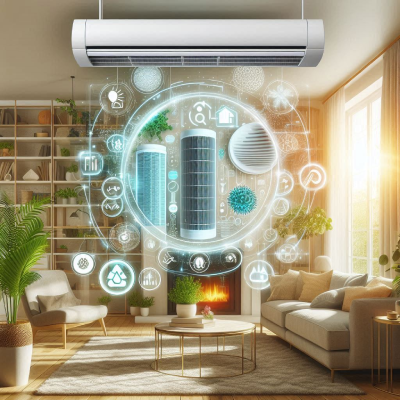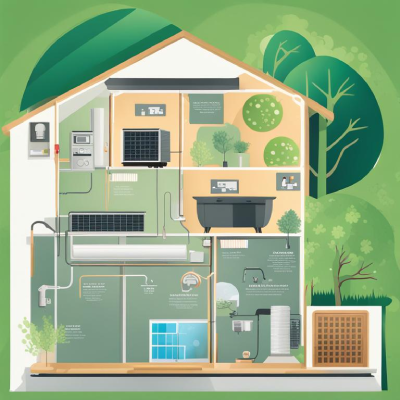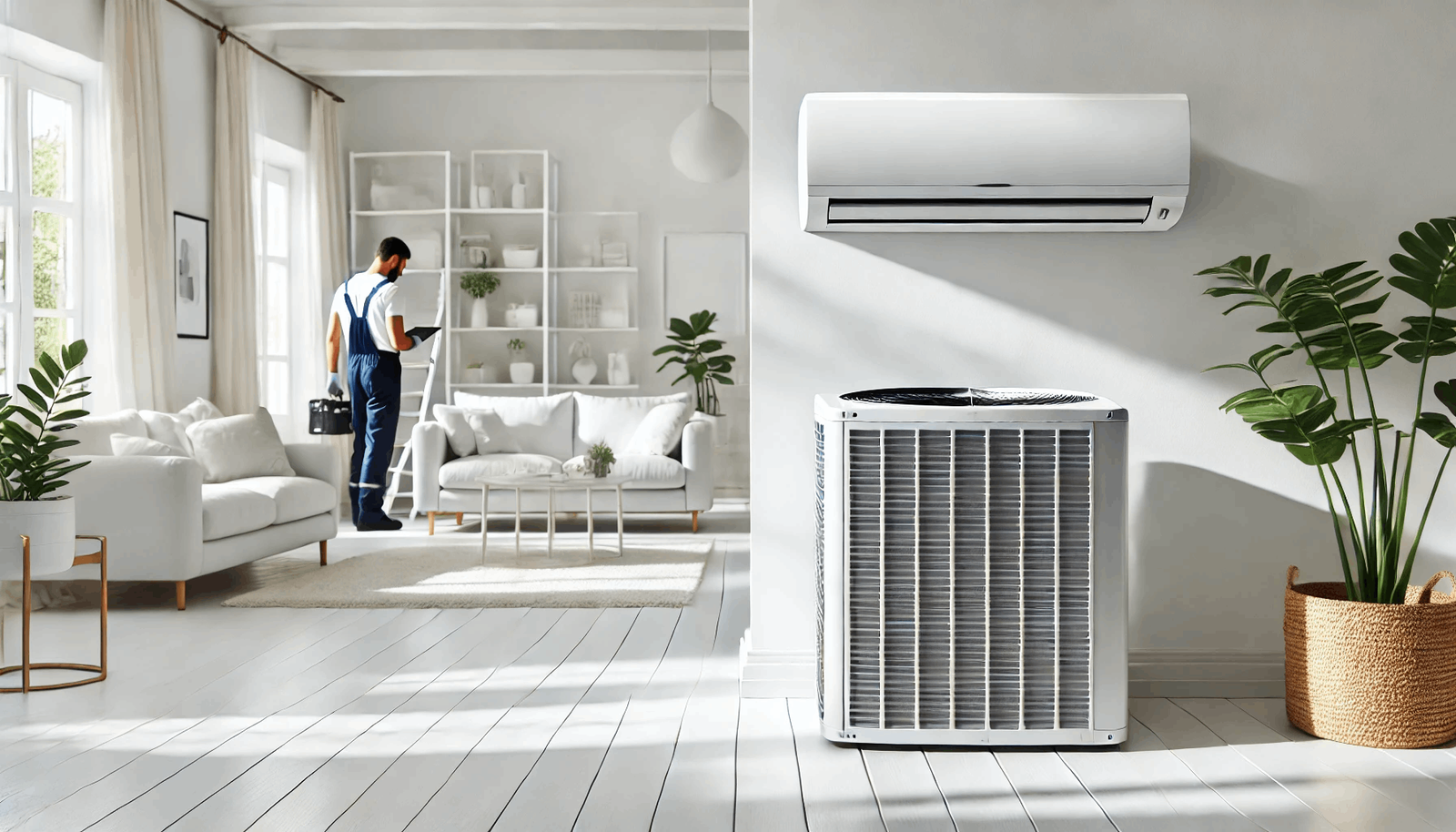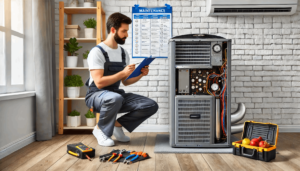Introduction
Maintaining your heating and air conditioning system is essential for keeping your home comfortable year-round. However, many homeowners are unsure of what a comprehensive maintenance plan includes and why it’s so important. Regular service ensures your HVAC system operates efficiently, reduces the risk of unexpected breakdowns, and extends the lifespan of your equipment. From checking refrigerant levels to cleaning air filters, professional maintenance covers a wide range of tasks designed to keep your system in optimal condition. In this article, we’ll explore what’s typically included in heating and air conditioning service maintenance plans and how these services benefit both your comfort and energy bills.
Why Regular Heating and Air Conditioning Service is Essential
Routine heating and air conditioning service plays a crucial role in maintaining a comfortable, energy-efficient, and reliable system in your home. Whether you’re dealing with cold winters or hot summers, ensuring that your HVAC (Heating, Ventilation, and Air Conditioning) system is functioning optimally is key to avoiding sudden breakdowns, high energy bills, and an overall less efficient system.
Prolonging the Life of Your HVAC System

Regular service and maintenance extend the lifespan of your heating and cooling systems. HVAC systems are expensive, long-term investments. By scheduling routine inspections, cleanings, and tune-ups, you can ensure that each component of the system remains in top condition, reducing the likelihood of premature wear and tear.
Over time, parts such as air filters, belts, and motors can become clogged, dirty, or worn out. These issues, if left unaddressed, can escalate into major system failures. For instance, dirty filters force your system to work harder, leading to overheating and eventually causing your HVAC unit to break down. Proactive maintenance not only prevents small issues from becoming major problems but also allows your system to perform efficiently for years beyond its expected lifespan.
Additionally, technicians can spot early warning signs of trouble, such as odd noises or inconsistent temperature regulation, and fix them before they become expensive repairs. This proactive approach can add several years to the life of your HVAC system, saving you from costly replacements.
Improving Energy Efficiency
Another key benefit of regular HVAC service is improved energy efficiency. A well-maintained system operates more efficiently, consuming less energy to heat or cool your home. When parts like air filters are clogged or the system is running inefficiently, it requires more energy to maintain the desired temperature, which results in higher utility bills.
Regular service ensures that your HVAC system is optimized for energy consumption. Technicians can clean and replace air filters, lubricate moving parts, and test the system to ensure it is running at peak efficiency. This not only reduces energy usage but also contributes to a more environmentally friendly home, reducing your carbon footprint.
Furthermore, as energy efficiency improves, so does the comfort in your home. Your HVAC system can maintain consistent temperatures with minimal effort, ensuring even heating or cooling throughout the home. You’ll experience fewer hot or cold spots, making your living space more comfortable year-round.
Preventing Costly Breakdowns

One of the biggest reasons for regular heating and air conditioning service is to prevent costly breakdowns. A sudden HVAC failure can be a major inconvenience, especially during extreme weather conditions, and repairs or replacements can be expensive.
When systems aren’t regularly serviced, small issues can go unnoticed until they result in major malfunctions. For example, neglecting a faulty thermostat could eventually cause your system to overheat or underperform, while not attending to dirty coils might lead to freezing or a complete system failure. Emergency repairs are often more costly than preventive maintenance, and they usually occur when the system is working the hardest—during the peak of summer or winter.
Regular maintenance helps to identify and address these issues before they spiral into significant problems. A trained technician can inspect components like the blower motor, ignition system, and refrigerant levels, all of which are essential to the proper functioning of the system. By investing in routine service, homeowners can avoid the stress, discomfort, and high costs associated with unexpected HVAC failures.
What to Expect in a Standard HVAC Maintenance Plan
Regular heating and air conditioning service is crucial for maintaining optimal HVAC system performance. A comprehensive HVAC maintenance plan covers several essential services that ensure the system runs efficiently and prolongs its lifespan. Below are the key components you can expect from a standard HVAC maintenance plan, which includes tasks such as air filter replacement, coil cleaning, thermostat calibration, and lubrication of moving parts.
Air Filter Replacement and Cleaning
One of the most critical aspects of any HVAC maintenance plan is the regular replacement or cleaning of air filters. The air filter prevents dust, dirt, and other debris from circulating through your system and entering your living spaces. Over time, air filters can become clogged, which reduces airflow and forces the system to work harder. This not only decreases energy efficiency but also increases wear and tear on your HVAC components.
In a standard maintenance plan, technicians will either clean reusable filters or replace disposable ones. Typically, filters should be checked and replaced every 1 to 3 months, depending on the environment and system usage. Clean filters improve indoor air quality, enhance airflow, and reduce the risk of respiratory issues, especially for households with allergy sufferers or pets.
Inspecting and Cleaning Coils
The evaporator and condenser coils play a crucial role in your HVAC system’s cooling and heating functions. Over time, dirt and grime accumulate on these coils, diminishing their ability to absorb and release heat effectively. Dirty coils can lead to reduced cooling capacity, higher energy consumption, and even system breakdowns.
During maintenance visits, technicians will inspect and clean these coils, ensuring they function efficiently. Cleaning the coils improves the system’s ability to regulate temperature, enhances cooling efficiency, and prevents future damage to essential components. This process also helps maintain the SEER (Seasonal Energy Efficiency Ratio) rating, which measures your system’s energy efficiency during peak seasons.
Thermostat Calibration and Adjustments

Thermostat calibration is another critical task included in standard HVAC maintenance plans. A properly calibrated thermostat ensures that your heating and cooling systems maintain the correct temperatures as per your settings. If the thermostat is out of calibration, it may cause the system to cycle too frequently or not operate at all, leading to discomfort and increased energy costs.
As part of regular service, HVAC technicians will calibrate and adjust your thermostat for optimal performance. This includes checking whether the thermostat is positioned correctly, ensuring it’s not exposed to direct sunlight or drafts, and verifying the battery life in wireless models. Proper thermostat function plays a significant role in energy conservation and system performance.
Lubricating Moving Parts
Lubrication of moving parts is another important aspect of HVAC maintenance. Components such as motors, fans, and belts are constantly in motion when your HVAC system is operating. Over time, friction can cause these parts to wear out prematurely, leading to mechanical failures and costly repairs.
During maintenance, technicians will lubricate all moving parts to reduce friction and ensure smooth operation. This step minimizes the risk of breakdowns, extends the lifespan of mechanical components, and contributes to quieter system operation. Regular lubrication helps the system run more efficiently, reducing energy consumption and preventing unexpected malfunctions.
Additional Services in Comprehensive Maintenance Plans
A heating and air conditioning service plan that goes beyond the standard maintenance routine offers a comprehensive approach to ensure the long-term efficiency and safety of your HVAC system. These additional services include crucial tasks like ductwork inspection, refrigerant level checks, electrical system inspections, and safety assessments for gas and carbon monoxide leaks. Let’s take a detailed look at these additional services and their importance in maintaining your HVAC system.
Ductwork Inspection and Cleaning

The ductwork in your HVAC system is responsible for distributing conditioned air throughout your home. Over time, dust, debris, and even mold can accumulate within the ducts, obstructing airflow and negatively affecting indoor air quality. Dirty ducts can reduce the efficiency of your HVAC system, force it to work harder, and increase energy bills.
As part of a comprehensive maintenance plan, professionals will inspect your ductwork for any blockages, leaks, or damages. If necessary, they will clean the ducts to ensure smooth airflow and better air quality. Additionally, inspecting ducts helps identify issues like leaks or disconnections, which can lead to wasted energy and uneven heating or cooling across different rooms. Ensuring your ductwork is clean and sealed can improve your system’s efficiency and extend its lifespan.
Refrigerant Level Check
Refrigerant is the lifeblood of your air conditioning system, and maintaining proper refrigerant levels is critical for its optimal operation. Low refrigerant levels can result in inadequate cooling, longer system run times, and potentially serious damage to the compressor. On the other hand, too much refrigerant can cause pressure issues, reducing efficiency and possibly damaging the unit.
A professional technician will check the refrigerant levels in your system and adjust them as needed during a comprehensive service visit. If there’s a leak, they’ll repair it and refill the refrigerant to the manufacturer-recommended levels. Keeping refrigerant levels in check is essential for energy-efficient cooling and preventing costly breakdowns. Additionally, monitoring refrigerant levels is an important factor in extending the lifespan of your HVAC system and ensuring comfort throughout the year.
Electrical System Inspection
Your HVAC system relies on a complex network of electrical components to operate efficiently. Electrical issues, such as loose connections, frayed wires, or faulty circuits, can result in system failures or even hazardous conditions like electrical fires. Over time, electrical components can degrade due to regular use, exposure to moisture, or improper maintenance.
As part of an extended HVAC maintenance plan, technicians will thoroughly inspect all electrical components, including wiring, circuit boards, and connections. They’ll ensure that all components are in good condition and operating safely. Addressing electrical problems early can prevent more significant issues later on, reduce the risk of system malfunctions, and keep your home safe from electrical hazards. A well-maintained electrical system also ensures that your HVAC unit operates efficiently and consistently, especially during peak seasons.
Safety Inspections for Gas and Carbon Monoxide Leaks
Gas-powered heating systems, such as furnaces, pose certain safety risks if not properly maintained. Issues like gas leaks or malfunctioning combustion systems can release dangerous gases like carbon monoxide into your home. Carbon monoxide is a colorless, odorless gas that can be fatal if inhaled in high concentrations. This makes safety inspections a crucial aspect of any comprehensive HVAC maintenance plan.
During a safety inspection, a professional technician will check for potential gas leaks, ensure that the combustion system is functioning correctly, and test for the presence of carbon monoxide. They’ll also inspect the heat exchanger for cracks or damages, which can be a source of leaks. In addition, they’ll make sure that all safety features, such as carbon monoxide detectors, are working correctly. Routine safety inspections can prevent life-threatening situations and ensure your home’s heating system operates safely and efficiently.
How to Choose the Right HVAC Maintenance Plan

Selecting the right heating and air conditioning service maintenance plan is crucial for the longevity, performance, and energy efficiency of your HVAC system. It’s important to consider various factors such as comparing service providers, understanding the costs and coverage, and checking reviews and customer testimonials. Here’s a breakdown of these key considerations.
Comparing Different Service Providers
When looking for an HVAC maintenance plan, it’s essential to compare the offerings of different service providers in your area. Not all providers offer the same level of service, and the quality of work can vary significantly. Some companies might specialize in certain types of HVAC systems, while others may offer a broader range of services.
Start by researching the credentials of the service providers. Look for companies that are licensed, insured, and have technicians certified by recognized industry bodies, such as NATE (North American Technician Excellence) or HVAC Excellence. A certified technician will have the knowledge and skills to handle various HVAC maintenance tasks effectively.
You should also compare the specific services included in their maintenance plans. While some providers might offer basic services like filter replacement and inspection, others could include more comprehensive options such as duct cleaning, refrigerant level checks, and electrical inspections. Evaluate what each provider offers and whether their services align with your HVAC system’s needs.
Understanding Costs and Coverage
Another critical factor to consider when choosing an HVAC maintenance plan is the cost and what’s covered under the plan. Maintenance plans can range in price depending on the services included, the frequency of visits, and the type of HVAC system you have.
For a basic plan, you might only get one annual visit for filter changes and system inspection. However, a more comprehensive plan may include bi-annual checkups, coil cleaning, duct inspections, and even discounts on emergency repairs or replacement parts. Make sure to understand what is covered in the plan and whether the services meet your system’s requirements.
When comparing costs, also take into account any additional fees that may not be included in the quoted price. Some providers may charge extra for emergency visits or out-of-hours services. It’s important to ask about these potential hidden fees upfront to avoid surprises later. Additionally, you should consider whether the maintenance plan includes labor and parts, or if you’ll be responsible for those costs in the event of a repair.
A well-priced maintenance plan may initially seem expensive, but it can save you money in the long run by preventing expensive breakdowns and extending the lifespan of your HVAC system. Make sure the plan is both affordable and comprehensive enough to provide real value.
Checking Reviews and Customer Testimonials

Before committing to an HVAC maintenance plan, it’s always a good idea to read reviews and check customer testimonials. This will give you an idea of the service quality, reliability, and customer satisfaction associated with a particular provider.
Online review platforms like Google Reviews, Yelp, and Better Business Bureau (BBB) are excellent resources for gathering information about a company’s reputation. Look for consistent feedback about the timeliness of service, professionalism of technicians, and how effectively they address customer concerns. A company with high ratings and positive feedback is more likely to offer reliable and satisfactory services.
In addition to online reviews, consider asking the service provider for references. Reputable HVAC companies will gladly provide references from current or previous customers who have used their maintenance plans. Speaking directly with these customers will give you more detailed insight into what you can expect from the company in terms of responsiveness, quality of work, and overall satisfaction.
It’s also helpful to check whether the company has any industry awards or certifications that highlight their commitment to quality service. Companies that have been recognized for excellence in customer service or HVAC maintenance often go the extra mile to meet customer needs.
Conclusion
Regular heating and air conditioning service is essential to keeping your HVAC system running efficiently, prolonging its lifespan, and ensuring optimal performance throughout the year. A well-structured maintenance plan can help prevent costly repairs, improve energy efficiency, and maintain indoor air quality. Whether you opt for a basic or comprehensive plan, it’s important to understand what’s included—from filter replacements and coil cleaning to more in-depth inspections of refrigerant levels, ductwork, and safety checks for gas leaks. Choosing a provider that is reliable, certified, and backed by positive reviews ensures that your system is in good hands.
Investing in an HVAC maintenance plan not only helps you stay comfortable year-round but also contributes to long-term savings by reducing unexpected breakdowns and maintaining energy-efficient operation. With the right plan, you’ll have peace of mind knowing your system is well-maintained and ready to handle the demands of every season.




